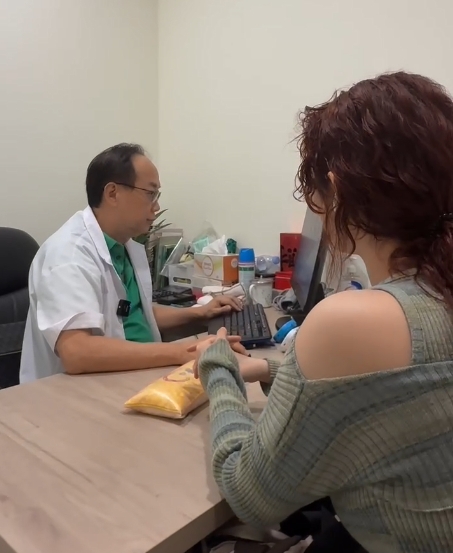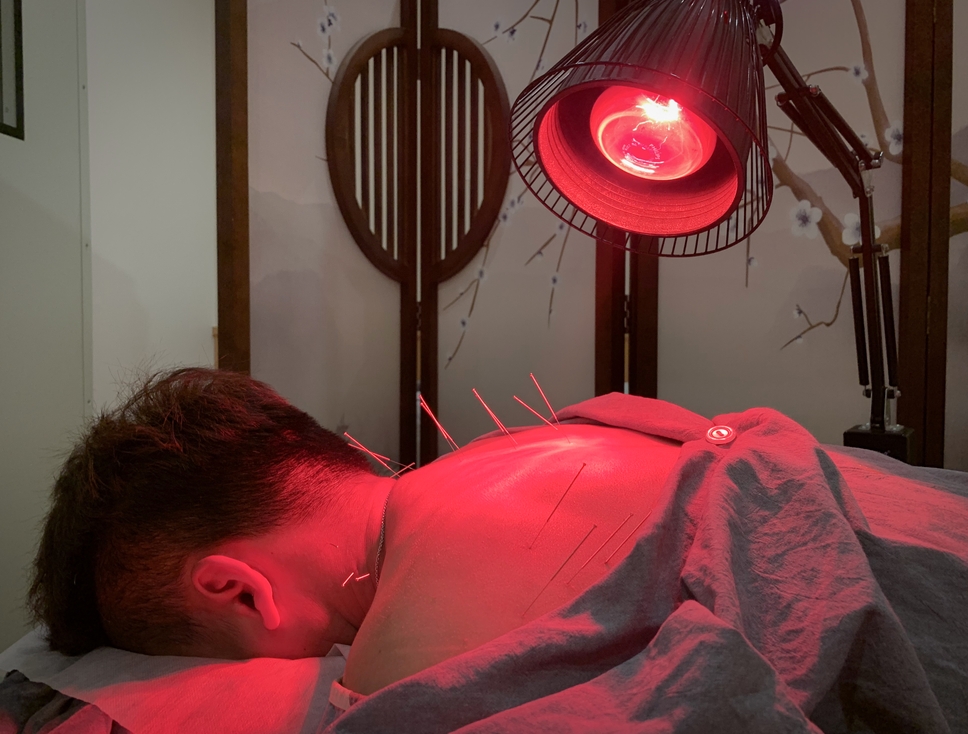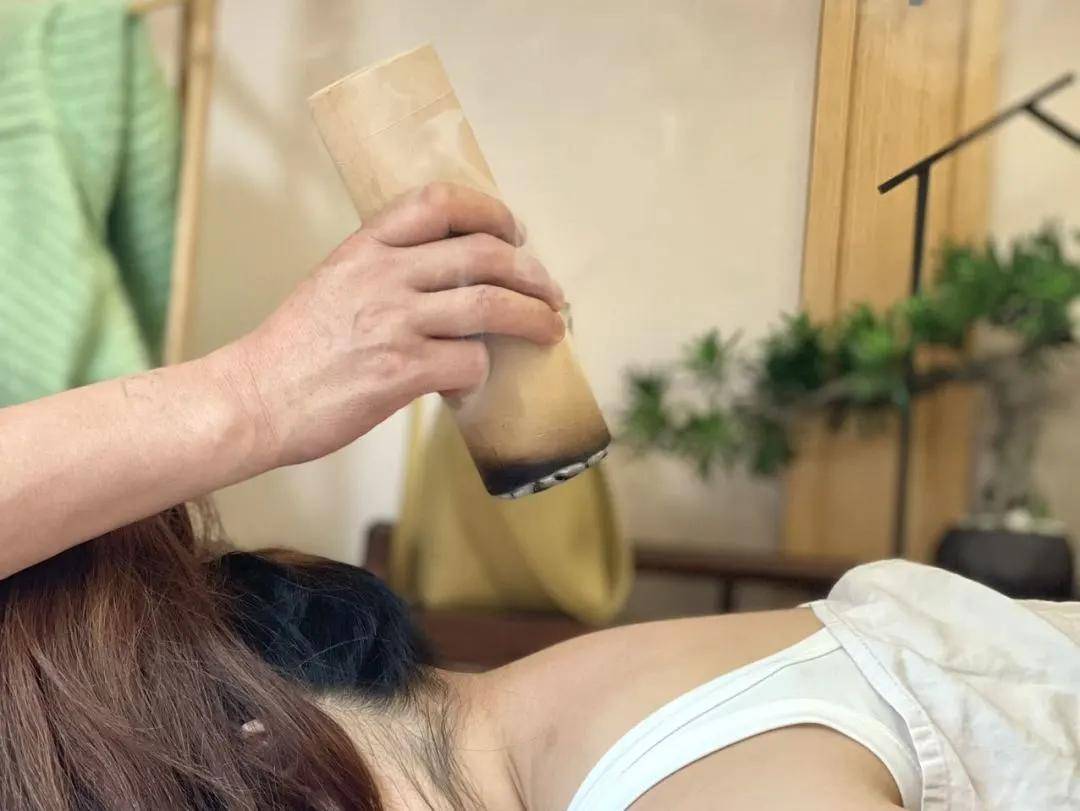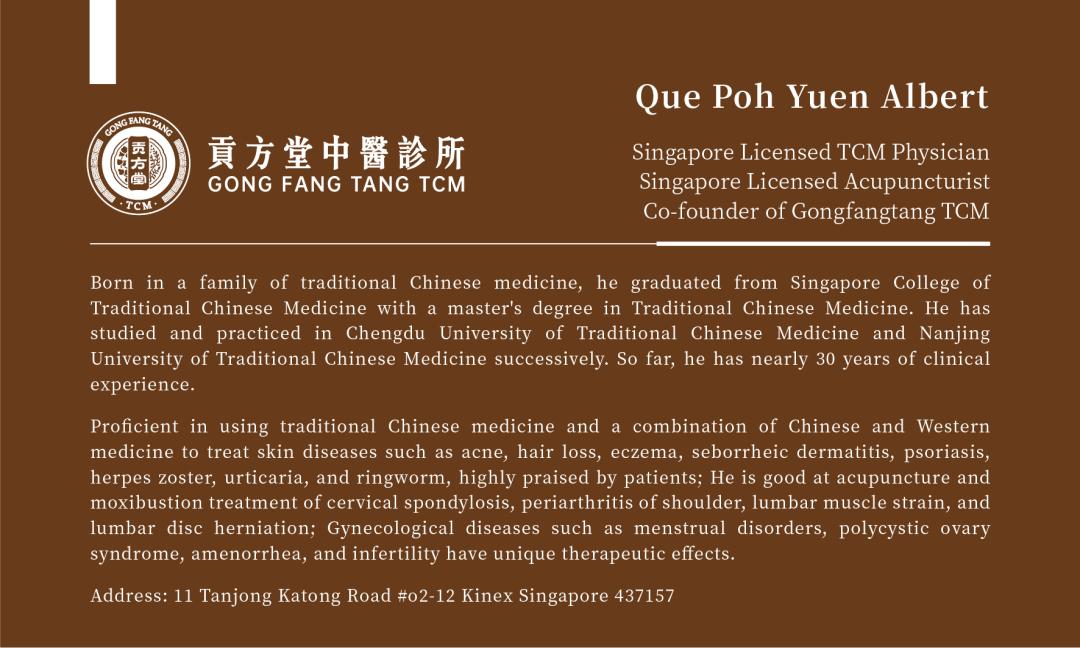What to Do About Dizziness, Hand Numbness, and Neck Pain? Gong Fang Tang TCM Dr. Qiu Baorun Takes a Multi-Pronged Approach!
回答
In the bustling urban life of Singapore, prolonged desk work and looking down at phones have made neck pain, dizziness, and hand numbness "common urban ailments." These symptoms not only affect daily activities but can also severely disrupt sleep and reduce quality of life in serious cases.

Dr. Qiu Baorun, a TCM physician at Singapore Gong Fang Tang TCM, points out that dizziness and hand numbness caused by cervical spondylosis are known as "Neck Obstruction" (项痹, Xiàng Bì) in Traditional Chinese Medicine (TCM). Its core pathology lies in the invasion of wind-cold-damp pathogens combined with qi and blood stagnation.
Wind-Cold Constraining the Exterior: Factors like direct air-conditioning drafts or getting caught in rain cause stiffness in the neck tendons and muscles, worsening pain upon exposure to cold.
Dampness and Stasis Binding: Singapore's hot and humid climate, combined with modern sedentary lifestyles that generate internal dampness, leads to phlegm and blood stasis blocking the meridians, resulting in numbness and swelling.
Liver and Kidney Deficiency: Liver blood deficiency fails to nourish the tendons, while kidney essence deficiency fails to replenish the bone marrow, accelerating cervical degenerative changes.
Do you have these three warning signs?
Neck "cracking" sounds when turning your head in the morning, lasting more than 3 days.
Numbness in the fingers; numbness in the little finger often indicates C8 nerve root compression.
Dizziness; sudden vertigo when turning the head may stem from vertebral artery insufficiency.

If you have the above symptoms, how can it be treated?
Acupuncture Therapy: A common TCM method for cervical spondylosis. Dr. Qiu precisely selects points on the neck and related meridians, such as Jingjiaji (cervical Huatuojiaji points), Fengchi (GB20), and Tianzhu (BL10). Needling these points unblocks meridians, regulates qi and blood, effectively relieving neck muscle tension, pain, and numbness.
Tui Na (Therapeutic Massage): Plays a vital role in TCM treatment. Practitioners accurately assess issues with neck muscles and bones. Using techniques like pushing, grasping, pressing, and kneading, they adjust cervical joint positions, relieve muscle spasms, and promote local blood circulation.
Cupping Therapy: Unblocks meridians and alleviates pain. Common cupping points include Dazhui (GV14), Jianyu (LI15), and Jianliao (TE14), selected and applied based on the patient's condition and constitution.
Moxibustion Therapy: Warms and unblocks meridians, dispels cold, and eliminates dampness. For patients with wind-cold-damp type cervical spondylosis, combining moxibustion enhances treatment efficacy.

Medical Case Study
Patient: Ms. Chen, 42 years old
Chief Complaint: Desk work exceeding 10 hours daily. Started feeling neck soreness and stiffness half a year ago, worse in the morning. Neck stiffness and pain accompanied by right hand numbness for over 6 months, severely affecting life and work.
Presenting Signs: Neck discomfort, limited movement, stiffness in neck, shoulders, and upper back, aversion to cold, pain worsening with cold and easing with warmth.
TCM Diagnosis: Neck Obstruction (项痹, Xiàng Bì) - Qi Stagnation and Blood Stasis Pattern
Treatment Principle: Invigorate blood, resolve stasis, unblock collaterals, relieve pain.
Herbal Prescription: Modified Gegen Decoction (葛根汤加减): Gegen (Puerariae Lobatae Radix) 10g, Guizhi (Cinnamomi Ramulus) 10g, Mugua (Chaenomelis Fructus) 10g, Fangfeng (Saposhnikoviae Radix) 10g, Shengjiang (Zingiberis Rhizoma Recens) 10g, Baishao (Paeoniae Radix Alba) 10g, Gancao (Glycyrrhizae Radix) 10g, Qianghuo (Notopterygii Rhizoma) 5g.
Acupuncture Treatment: Points: Dazhui (GV14), Jiaji points (cervical), Jianjing (GB21), Yanglao (SI6), Jianyu (LI15), Quchi (LI11), Hegu (LI4), Waiguan (TE5), Tianzong (SI11). Retained needles for 30 minutes, once daily.
Outcome: After the third visit (14 days later), cervical range of motion recovered to 80%, and hand numbness completely disappeared.
Prevention in daily life is crucial. Maintaining correct posture (sitting and standing), avoiding prolonged looking down, taking regular breaks to move the neck; performing appropriate neck exercises like cervical spine stretches; and keeping the neck warm to avoid exposure to cold can all effectively prevent and alleviate cervical issues.

TCM emphasizes pattern differentiation and treatment tailored to the individual. Specific herbal formulas, dosages, and usage must be guided by a professional physician based on syndrome differentiation and modified accordingly. Never self-medicate blindly.